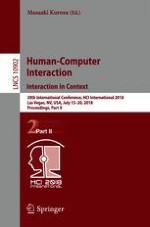2018 | OriginalPaper | Chapter
Research on Personalized Learning Pattern in Traditional Handicraft Using Augmented Reality: A Case Study of Cantonese Porcelain
Authors : Yi Ji, Peng Tan, Henry Been-Lirn Duh
Published in: Human-Computer Interaction. Interaction in Context
Publisher: Springer International Publishing
Activate our intelligent search to find suitable subject content or patents.
Select sections of text to find matching patents with Artificial Intelligence. powered by
Select sections of text to find additional relevant content using AI-assisted search. powered by
